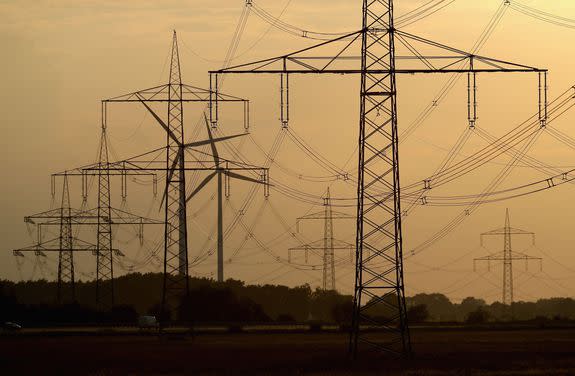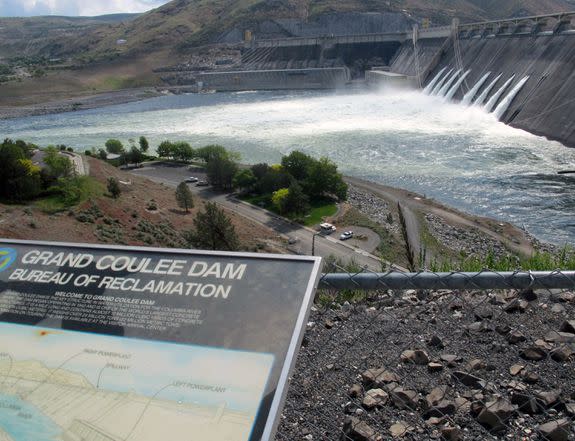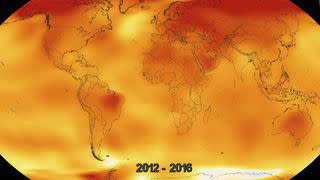Can the U.S. run only on wind, water, and solar power? Scientists disagree.

Scientists widely agree that human activity is the main driver of global warming, and that we have to radically reduce greenhouse gas emissions to avoid its worst impacts. But when it comes to how we can best slash emissions, some scientists are fiercely at odds.
A scholarly brawl broke out this week after energy experts ripped apart a widely cited 2015 study that found the U.S. economy could affordably run on 100-percent renewable energy by midcentury.
SEE ALSO: Climate change efforts still 'not nearly enough' to meet Paris targets
Nearly two dozen physicists, engineers, climate scientists, and scholars poked gaping holes in the previous analysis — which asserts that wind, solar, and hydropower alone could power not only the entire U.S. electric grid but also the transportation system, all heating needs, and the entire industrial sector by 2055.
In response, Mark Jacobson, who led the 2015 study and is a prominent engineer at Stanford University, fired back. His critics knowingly made "factually false claims" and deliberately smeared his research, he said in an email.

Image: sean gallup/Getty Images
The journal Proceedings of the National Academy of Sciences published both the critique and Jacobson's rebuttal on Monday. (It had also published Jacobson's original paper.)
On the one hand, this quarrel over whether we can really get to 100-percent wind, water, and hydropower can be seen as a distraction. The U.S. and all countries need to take drastic steps to reduce emissions from the economy within a matter of decades — why stir up a feud about one particular approach, especially at a time when the White House is occupied by a climate denier?
On the other hand, this dispute represents a fundamental debate over how America's clean energy future should be implemented. Should we winnow our energy system down to only a few renewable sources, or can nuclear, natural gas, biofuels, and battery storage systems play an important role for decades to come?
These two visions aren't hypothetical roadmaps meant for scientific audiences. Instead, they offer competing guides for policymakers to adopt, with trillions of dollars and the sustainability of our planet on the line.

Image: BNEF clean energy investment 2016
Studies like these can influence real-world decisions — and indeed, cities and states across the U.S. are increasingly pushing for a 100-percent renewables agenda. The Solutions Project, an organization that Jacobson co-founded after publishing his study two years ago, is working to accelerate a renewables-only plan in all 50 states.
That advocacy effort is largely why this group of scientists said they decided to speak out.
They're concerned policymakers will mandate goals that can't be achieved with available technologies at reasonable prices, leading to "wildly unrealistic expectations" and "massive misallocation of resources," David Victor, an energy policy researcher at the University of California, San Diego, and coauthor of the critique, told MIT Technology Review.
"That is both harmful to the economy, and creates the seeds of a backlash," Victor told the magazine.

Image: Astrid Riecken/Getty Images
In the original 2015 paper, Jacobson and his coauthors concluded that U.S. energy systems could convert almost entirely to wind, solar, and hydropower sources alone. This would largely be achieved by using vast energy storage systems and by integrating regional electricity grids to better balance supply and demand.
Nuclear power plants, carbon capture and storage technology, big banks of batteries — none of these would be needed in this scenario.
Yet the critics — led by Christopher Clack, who is the founding CEO of Vibrant Clean Energy, a grid modeling firm — said this conclusion doesn't hold water.
The 2015 analysis and related research "are severely compromised by modeling errors, unrealistic methods, and incorrect, implausible, or inadequately supported assumptions," they wrote in the new paper.
For instance, they said Jacobson and his colleagues miscalculated the amount of available hydropower. The 2015 paper shows that maximum output from U.S. hydroelectric plants is around 145 gigawatts today — about 50 percent more than the actual installed capacity.
At the same time, however, Jacobson's paper shows hydro output exceeding 1,300 gigawatts, about nine times higher than his own model projected.

Image: nicholas K. Geranios/AP/REX/Shutterstock
Critics also noted the analysis assumed the U.S. would build vast amounts of energy storage, with an output capacity that's more than 2.5 times the size of today's entire U.S. electricity system. Hydrogen and underground thermal systems — or heat stored in rocks buried below the surface — would supply almost all of that storage, yet neither technology is widely available at a commercial scale today.
Instead of going all-in on renewables, "The most feasible route to a low-carbon energy future is one that adopts a diverse portfolio of technologies," Clack and his coauthors wrote.
"The paper should not in any way be construed to support action against policies to encourage renewable energy development," they wrote. "Rather, the paper asserts that wind, solar, and hydropower alone likely do not represent a complete, reliable, or cost-effective pathway to decarbonization."
Jacobson defended his research, noting the hydropower numbers are not the result of a modeling error; rather, they reflect assumptions that are baked into the analysis. He noted that commercial-scale storage projects with hydrogen and underground thermal energy already exist in parts of the world, and it's not unreasonable to think they could scale up within a few decades.
"Our conclusions are correct," Jacobson said.
However we proceed, climate scientists are clear: Today's energy systems will have to drastically change if we're going to curb emissions and prevent dangerous levels of global warming this century.
WATCH: It's official, 2016 was Earth's warmest year on record

